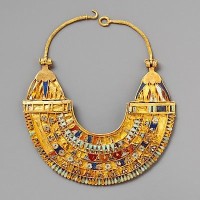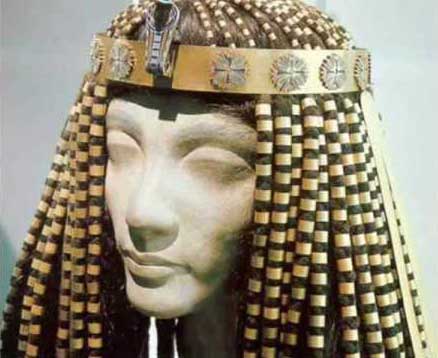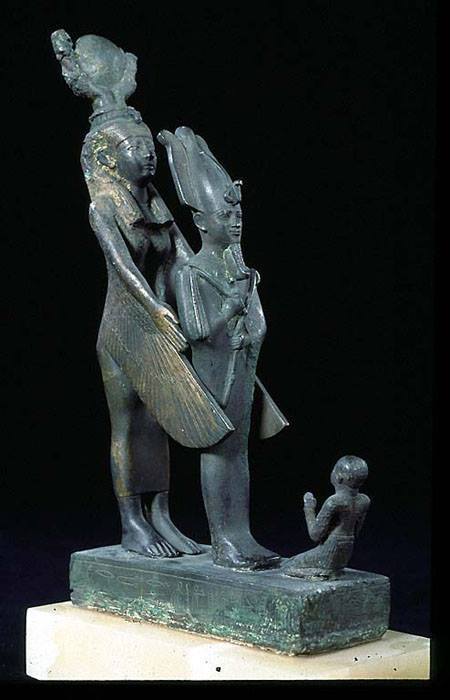

![No. [13] The vulture goddess (Nekhbet) carrying a ‘Shen ring’ - 'Tomb KV 55' (1907).](https://i.pinimg.com/564x/0b/75/0c/0b750cb037817e7b55604af791203932.jpg)

The Egyptian Collar, known as a Wesekh, is probably the most well-known piece of jewellery worn by the ancient Egyptians. The jewellery style is depicted in temple reliefs, on the walls of burial chambers, on the death masks of the pharaohs and in surviving pieces of art. The collars covered the wearer from breast to collar bone and were worn by both men and women. The collars were often made of gold and copper and featured rows of beads. The more lavish styles were inlaid with gemstones and intricate metalwork. Due to the high cost of creating these magnificent jewellery pieces, the collar necklace was typically worn by the pharaohs, the royal families, priests and the wealthy. These collars denoted wealth and prestige in ancient society. Depending on the exact style of the collar, the necklaces could also signify a variety of societal and religious meanings.
















